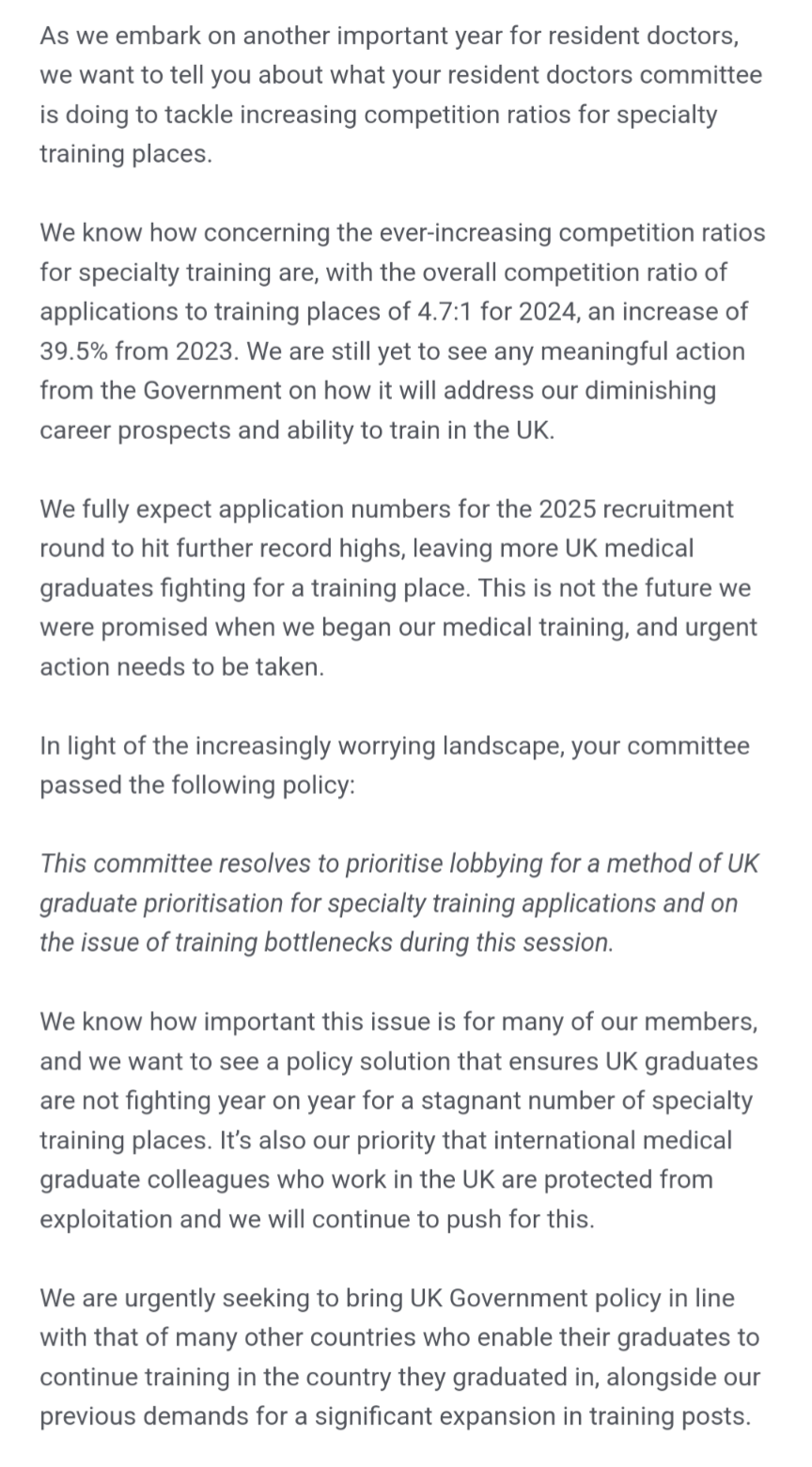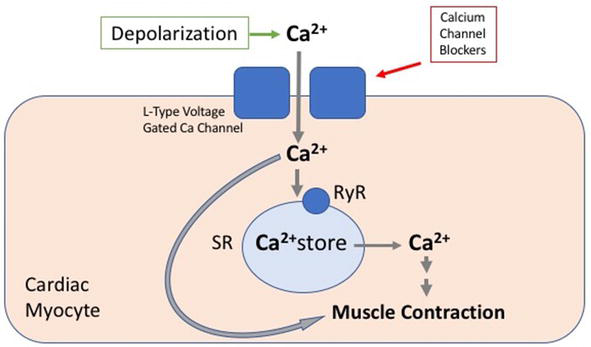New BMA Policy
Dear Friend,
If I had to describe the past week in one word, it would be: cold! Every day, I’ve had to wake up 10 minutes earlier just to defrost my car, and then in the evenings, I’ve been getting home 10 minutes later due to the ice. Hopefully, today marks the end of this icy spell.
For those of you who have been following my newsletters over the past few months, you may recall the one I sent discussing the sharp increase in competition for training positions, with some specialties now having ratios of 7:1 or higher. Even IMT, which used to be relatively easy to get into, has seen a rise to ratios above 4:1, with many of my colleagues not even making it to the interview stage.
A key factor contributing to this surge in competition dates back to 2019, when guidelines were changed to allow international medical graduates (IMGs) to apply for specialty training in the first recruitment round. Specialty training recruitment is typically organized in rounds. The main round follows the academic year, with doctors applying in November for positions that start the following August. If there are any unfilled posts, a second round (Round 2) is held, where doctors can apply for positions starting in February.
What Happened in 2019?
Before 2019, IMGs had to pass the Resident Labour Market Test (RLMT), which essentially meant that no job in the UK should be offered to an overseas national if there were suitable candidates from the UK or EU. This was understandable—countries don’t want to leave their own citizens unemployed.
In line with this rule, Round 1 of specialty recruitment prioritized UK and EU nationals for training posts. Any remaining vacancies after Round 1 would be reopened in Round 2, where IMGs could apply, but only if they required Tier 2 work visas.
However, on October 6, 2019, the UK government exempted all overseas doctors from the RLMT, as all medical professions were included on the UK Shortage Occupation List. This change was made in response to the ongoing shortage of doctors in the country.
What Does This Mean Now?
While it’s clear why this change was implemented, given the shortage of doctors, it has led to a significant bottleneck in the system. With medical school intake numbers now significantly increased, many doctors are finding it increasingly difficult to progress beyond the FY2 level, struggling to secure training positions or even jobs. As a result, there’s a growing sentiment to return to the previous system that prioritized UK graduates. The British Medical Association (BMA) has even released a statement on this issue, which you can read below.

Will It Make a Difference?
It’s important to note that this is a BMA policy, which means they will now begin lobbying (discussing) it with the government. This is just the first step toward potential change. There is no guarantee that the government will agree to this petition, especially considering the current challenges of rising waiting times and the ongoing NHS winter crisis. Any change will be a highly political decision.
I’d love to hear your thoughts on this. Should the UK prioritize its own graduates, or should there be no distinction between UK and international medical graduates (IMGs)? There are pros and cons to both sides of the debate, and I know I’ll be following this development closely.
Drug of the week
Nimodipine
This is an L-type calcium channel blockers that binds the inactive form of the channel.
Nimodipine, is used in preventing vasospasm secondary to subarachnoid hemorrhage (a form of cerebral hemorrhage).
It was originally developed within the calcium channel blocker class as it was used for the treatment of high blood pressure, but is not used for this indication.
Binding the inactive channel gives them selectivity for vascular smooth muscle over cardiac muscle, allowing them to cause vasodilation and decrease afterload.

A Brain Teaser
A 9-month-old baby is seen on the ward after arriving into the emergency department last night with seizures. The parents show you a video of the contractions which appear very similar to colic. They also report a change in her development and are concerned she is struggling. You arrange an EEG which shows hypsarrhythmia and a MRI head which is abnormal.
What is the most likely diagnosis?
A: Infantile colic
B: Pseudoseizures
C: West’s syndrome
D: Febrile convulsions
E: Temporal lobe epilepsy
Answers
The answer is C – West’s syndrome
The seizure pattern in west’s syndrome are known as infantile spasms, and to the family they can appear to look like colic.
In this case, it is important to understand there is a definitive pathology due to the abnormal EEG and MRI, with hypsarrhythmia being classical of west’s syndrome.
Infantile colic and pseudo seizures in babies can look similar to seizures, however, the abnormal EEG concludes a pathology within the brain. There is no history of an infection or fever to support febrile convulsions. Temporal lobe seizures are commonly partial seizures with sensory auras.




